
Bad Buchau is a small town in the district of Biberach, Baden-Württemberg, Germany with about 4,000 inhabitants. It is situated near Lake Federsee, which is separated from the town by a wide reed belt.

Blaubeuren Abbey was a Benedictine monastery until the Reformation, located in Blaubeuren, Baden-Württemberg, Germany. It is now a Protestant seminary.

Saint Blaise Abbey was a Benedictine monastery in the village of St. Blasien in the Black Forest in Baden-Württemberg, Germany.

Baindt Abbey, otherwise the Imperial Abbey of Baindt, was a Cistercian nunnery in Baindt in the district of Ravensburg in Baden-Württemberg, Germany.

Schussenried Abbey is a former Catholic monastery in Bad Schussenried, Baden-Württemberg, Germany. It is famed for its Baroque library hall. The abbey was established in the 12th century by the Premonstratensian Order and made an Imperial Abbey in the 15th century. The monastery sustained immense damage in the Thirty Years' War. In the 18th century, the abbey began expansions in the Baroque style, but was unable to complete them. The abbey was secularized in 1803 and twice awarded during the process of German Mediatization, eventually becoming a possession of the Kingdom of Württemberg. Its second king, William I, opened a foundry on its grounds, which was followed by a nursing home. These ceased operation or moved out of the monastery in the 1990s.
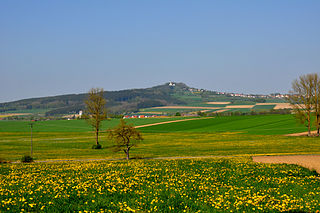
The Bussen is a mountain in southern Germany, in the region of Upper Swabia, with an elevation of 767 metres. It is also known as the Holy Mountain of Upper Swabia. It is situated on the border between the Swabian Alb and Upper Swabia proper. Being one of the most visited places of pilgrimage in Upper Swabia, it also has views as far as the Alps more than 100 kilometres (62 mi) to the south.

Essen Abbey was a community of secular canonesses for women of high nobility that formed the nucleus of modern-day Essen, Germany.
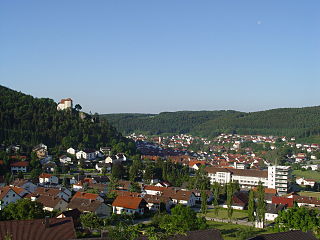
Straßberg is a municipality of the Zollernalb district of Baden-Württemberg, Germany.

Schänis Abbey was founded in the 9th century. It was situated in the present town of Schänis in the canton of St. Gallen, Switzerland. It was a house of secular canonesses of the nobility and was dissolved in 1811.

Gandersheim Abbey is a former house of secular canonesses (Frauenstift) in the present town of Bad Gandersheim in Lower Saxony, Germany. It was founded in 852 by Duke Liudolf of Saxony, progenitor of the Liudolfing or Ottonian dynasty, whose rich endowments ensured its stability and prosperity.
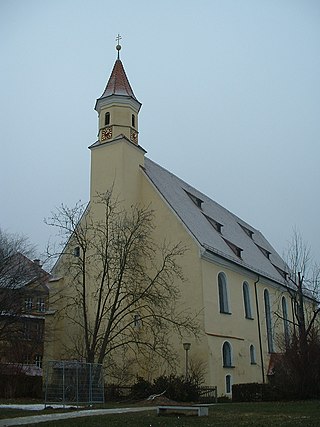
Söflingen Abbey was a nunnery of the Order of Poor Ladies, also known as the Poor Clares, the Poor Clare Sisters, the Clarisse, the Minoresses, or the Second Order of St. Francis. It was situated in the village of Söflingen, now part of Ulm in Baden-Württemberg, Germany. Being the oldest nunnery of this order in Germany, it was also its most important and most affluent.
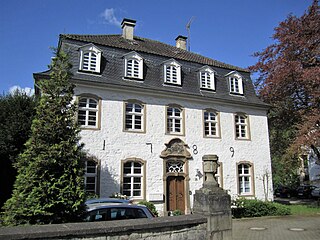
Elsey Abbey, earlier Elsey Priory is a former women's religious house located near Elsey, now part of Hohenlimburg, Hagen, Germany.
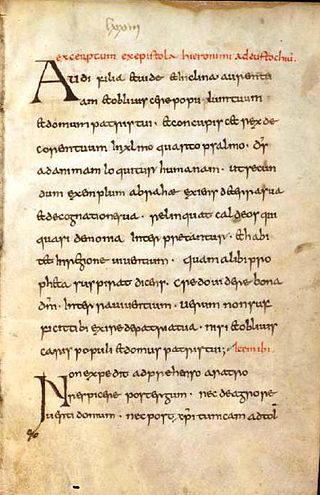
The Synods of Aachen between 816 and 819 were a landmark in regulations for the monastic life in the Frankish realm. The Benedictine Rule was declared the universally valid norm for communities of monks and nuns, while canonical orders were distinguished from monastic communities and unique regulations were laid down for them: the Institutio canonicorum Aquisgranensis. The synods of 817 and 818/819 completed the reforms. Among other things, the relationship of church properties to the king was clarified.

Günterstal Abbey, earlier also Güntersthal Abbey, was a Cistercian nunnery that existed from 1221 to 1806 located in Günterstal, which today is a district in Freiburg im Breisgau, Germany.
Siegbert Einstein was a German-Jewish politician, factory worker, civil servant, lawyer, Holocaust survivor, and the last Jew who lived in the Jewish community in Bad Buchau.

Adelindis von Buchau, also known as Adelinde, was the founder of the Buchau Ladies' Convent, in today's Bad Buchau near the Federsee lake in Swabia, Francia. She is not to be confused with Adelindis, the 2nd abbess of the monastery.





















